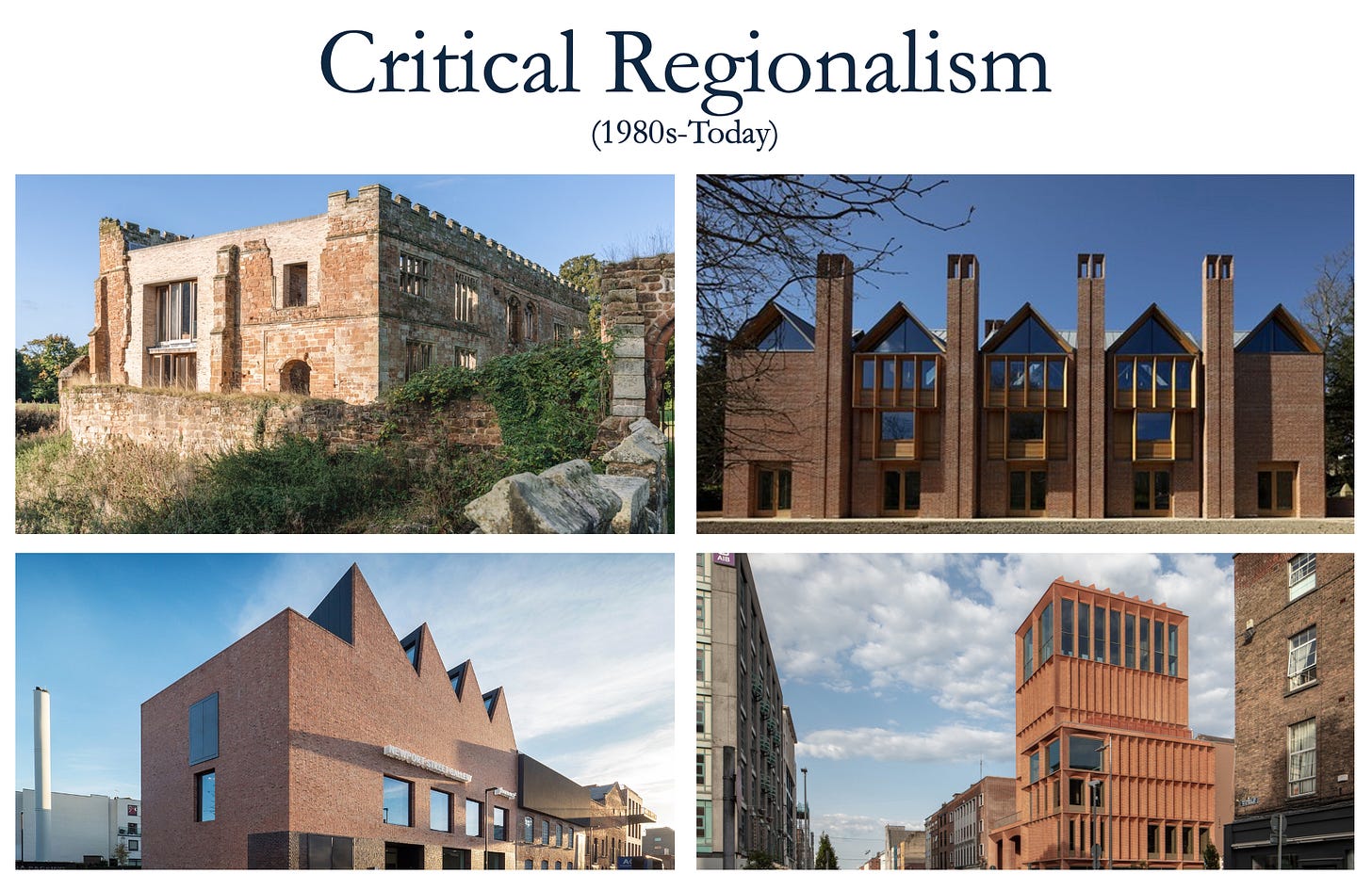My name is Louis Elton. I’m on a quest to craft an entire outfit from underwear-to-outerwear entirely in Britain. Why? To trigger a renaissance in local British manufacturing and to heal the nation’s spirit, of course! If you forgot how you got here, here’s a reminder of what I am doing.
TL;DR: this week, I share a chaotic essay-cum-moodboard that I prepared for my design partners Tom & Angel who are working on the next iteration of the logo.
1. The Background
As we step forward into the next stage of designing the visual identity for Nation of Artisans, I wanted to dive a little deeper into the thinking behind the project.
Design is a way of making a philosophical worldview flesh.
For me, this process is way of making sense of the future.
Nation of Artisans begins with a very specific feeling.
Something seems to be wrong in the world.
The future we are heading towards is not the one we were promised.
Few are certain of the triumph of liberal democracy, free trade, technological optimism — things not getting better and better.
In fact, many things are getting much shitter!
There are more bumps to come. The chaos won’t stop soon.
I don’t have the answers to these problems.
However, I do think there is much to learn from the past — timeless truths such as the importance of community, slower living, deeper connection with people, places, and things — and of course — craft.
Nation of Artisans is trying to capture some of those ideas.
That is not to say that the truth lies only in the past. I don’t want to go back! Golden Age nostalgia is a fallacy. Progress has been made — cynics and critics constantly forget that.
Yet, there must be a way of finding a harmony. Using the tools of today and tomorrow to revive some of the greatest hits of the past.
I want that to come through in the design for Nation of Artisans.
The real question then is: which past(s) is Nation of Artisans attempting to revive?
2. NOA’s Architectural Influences
Throughout history, philosophers, politicians, designers, and architects have constantly been claiming that ‘things used to be better’.
Architects often wrestle with this so let’s begin there. Then we can sidestep into graphic design. This is not a rigorous essay or history; forgive the chaos.
(Readers: this was initially just a mad doc for my designers, I never meant to share this with you then thought why not‽)
A heavily abridged summary of British Aesthetics past & future
The neo-Classicists (1750–1850), drunk on the progressive rationalism of the Enlightenment harked back to Rome.
In response, the Gothic Revivalists (1740–1880s), inspired by the spirit of medieval Christian revivalism, carved ornate but imperfectly crafted stone, reflecting the human touch.
Dissatisfied by mechanised industrialism, capitalism and urban decay, the Arts & Crafts movement (1880–1925), channelled the dream of guilds, rural life, and honest simplicity. I really want to like Arts & Crafts, but in practice, I think it’s often comes out hideous.
Rejecting Victorian stiffness, the Modern Style — the British Art Nouveau— sparked by a new cosmopolitan outlook of leisure and thirst for sensuousness, experimentation, and even the erotic!
Then, with the wars, we had waves of modernism, brutalism, and a hotchpotch of contemporary styles I detest — though in moderation, it can work very well. St Paul’s Cathedral breaking through a sea of glass and steel skyscrapers is a sight to behold.
More recently, we’ve seen some forms of contemporary architecture that seeks to revive the spirit of the past without engaging in shallow pastiche. For example, there’s some fantastic critical regionalist work in the UK — check out Niall McLoughlin in particular.
3. NOA’s Visual Future
What does this all mean for Nation of Artisans? Well, NOA starts with a similar feeling to a lot of these architectural movements. The idea that something is wrong with the way we do things today.
Today’s design is far too concerned with optimisation for digital… the much memed Sans Serif critique…
However, I’m delighted that in the world of graphic design, we are finally seeing various movements that are attempting to re-infuse soul into graphics. These include:
Future medieval
A particularly Bopea style. It take us back — while keeping it clean.
Future Deco / Neo Deco
This seems to be emerging in America. Less relevant to the UK but interesting nonetheless. Check out the a16z rebrand and new Dacora Motors “American Rolls Royce”
Vintage Revival
I hate this, but there’s a lot of it. It’s still better than most contemporary graphic design.
Serif Minimalism
This stuff is delightful, perfectly balancing character and clarity.
Where do we go from here?
As we’ve discussed, I don’t want to go too deep into the future medieval / gothic nostalgia — Nation of Artisans is a platform and needs must be able to sit accross many spaces.
I want the design to channel the past, but are not trapped by it. It’s about keeping the flame alive, not worshiping the ashes.
I want it to feel deeply rooted in Britain, but be immersed in the world beyond.
I want it to feel clean, but not sterile — like a Thomas Heatherwick New Routemaster (which is sadly being retired!)
What would it mean to craft a logo that mirrors what British critical regionalism does for architecture, but in graphic design?
Perhaps this is simply too difficult to pin down! Perhaps it requires thousands of designers. Perhaps I am mad. Ramble over.
I leave you with the awesome cover of Arthur Heygate Mackmurdo’s book Wren's City Churches. I think there’s something special about the way it brings together English Baroque, Arts & Crafts, and Art Nouveau.
Until next time.
If there are typos in this, it proves that I didn’t use ChatGPT to write it.
















